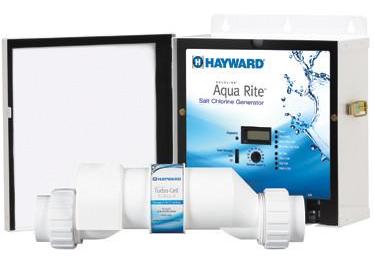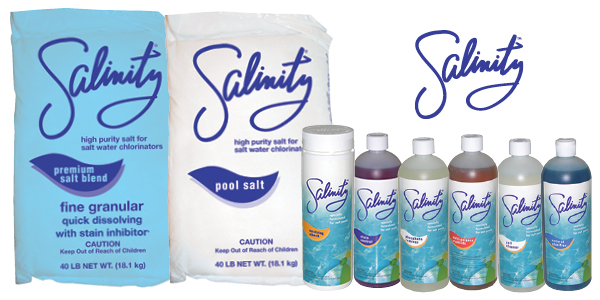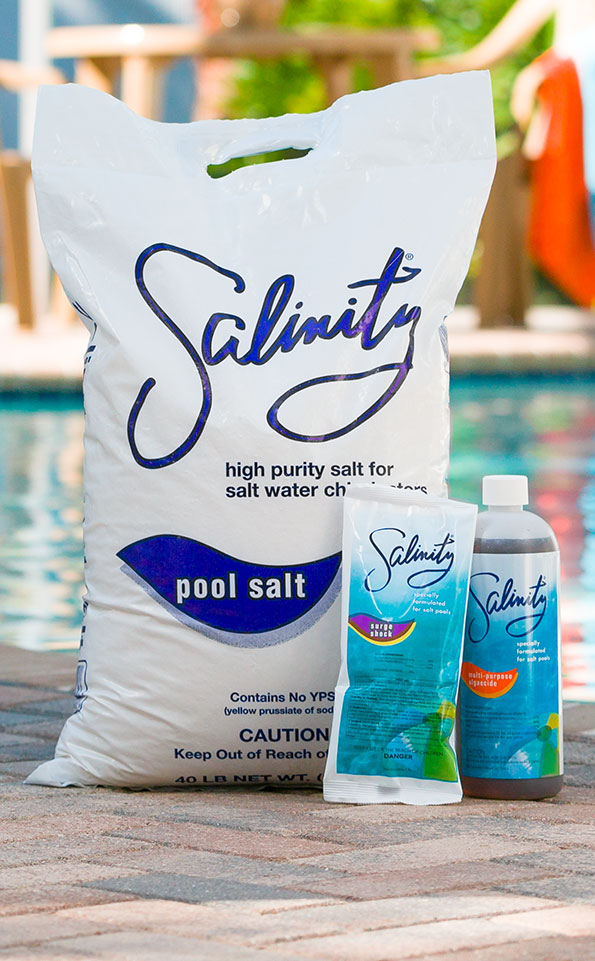Salt water pools are becoming more and more popular. This article will break down how salt generators work and what equipment is necessary to run them. Whether you are building a new pool or thinking about converting your existing pool to a salt system, there are a few key items you need to consider.
How a Salt Generator Works
Some people think that salt pools do not contain chlorine. This couldn’t be further from the truth. A salt pool sanitizes the water with chlorine just like other pools. The difference between them is in how the chlorine is added to the pool. Salt chlorine generators convert sodium chloride (NaCl), also known as table salt, into chlorine. These salt generators, also called salt cells, work by electrolysis. The salt water is electrically charged, which splits the salt molecules and generates chlorine (Cl).
Parts of a Salt Generator
A salt generator contains two parts- the cell and the control board. The cell is the part that converts the salt into chlorine. Water passes through the cell and over blades that are coated with ruthenium or iridium, which are naturally occurring metals. They are charged by the control board, which provides the electricity. The control board allows you to control the level of chlorine in the pool. It also lets you connect your salt chlorinator to a pool automation system and control it by a remote or mobile device, such as iPad, iPhone or Android.

Chlorinator Maintenance
A common myth is that salt systems require zero maintenance, but that is false. Your chemicals still need to be checked and maintained on a regular basis. You will also need to add salt to your pool, depending on the time of year and the usage. Check out the ABC’s of Pool Care for Salt Pools for more information. Your salt cell must also be inspected from time to time, about once every 3-6 months. If there is excess calcium build-up on the blades, clean it with Salinity Cell Cleaner.
Benefits of a Salt Generator
• A salt generator will save you the work of going to the store to pick up heavy jugs of chlorine. Instead, you use Salinity Surge Shock on a weekly basis to shock your pool.
• The amount of chlorine generated can be changed at the touch of a button.
• Salt pools are softer on your skin- many people report that the water is much silkier. It is also easier on bathing suits, clothing and hair. Some bathers say there is less of a chlorine smell when they get out of the pool, and there is also no salt taste.
• Less maintenance- although the regular checking of pool water chemistry is still necessary, the advantage of a salt cell is that it disperses chlorine at a consistent rate when the pump is on. This will cause less fluctuation in the chemical levels in your pool, making a healthy balance easier to maintain.
Chemicals for Saltwater Pools
Salinity Salt Chemicals from Pinch A Penny are the highest quality you can get. When you use Salinity products, you can be certain that its formula is ideal for your saltwater pool.

For more information on pool care for salt pools, check out our Salt Pool Basics article. You can also visit your local store and talk to the experts!
Share This Post
Related Tags

